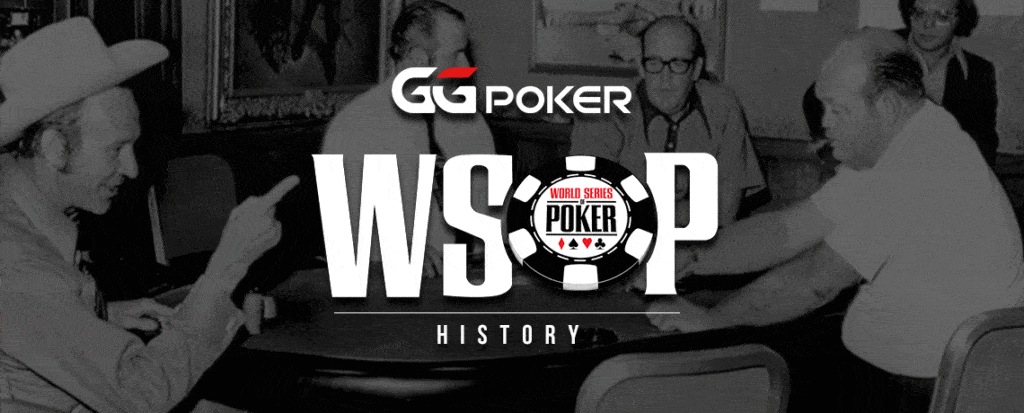The Story of the 1981 WSOP Main Event
A year on from Stu ‘The Kid’ Ungar’s epic win against Doyle Brunson in the 1980 WSOP Main Event, 75 players came to Las Vegas to play the World Championship event seeking their fortune. Their number included the defending champion, as Ungar bid to become only the third man in poker history to win back-to-back World Championships and the second to do it at the felt after ‘Texas Dolly’, a.k.a. Doyle Brunson himself.
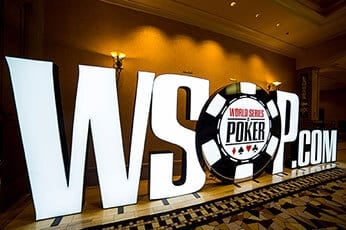
Bigger and Better Than Ever Before
In 2024, the World Series of Poker announced that the theme of the 55th annual WSOP would be ‘Bigger and Better.’ This could easily have applied to the action in 1981 as 13 events – an increase from the 12 in 1980 – took place at Binions’ Horseshoe in Las Vegas. Players from all over America, as well as a few from international destinations, gathered in Sin City to try their luck and hoped to win hundreds of thousands of dollars.
The early events saw smaller buy-ins but huge fields as Ed Barmach won the $1,000 Limit Draw High Opening Event for $18,000, Juanda Matthews & Frank Cardone took home $7,800 each by winning the $600-entry Mixed Doubles event, and Fred David won $96,000 by taking down the 128-entry $1,500 No Limit Hold’em Event #3.
Sid Gammerman earned bragging rights in the Limit Seven-Card Stud taking home $52,000 with the victory while Ruth Godfrey prevailed in the $400 buy-in Women’s Seven-Card Stud event for $17,000. Bruce Hershenson earned $34,500 in the $1,000-entry Limit Razz event. Then it was time for Johnny Moss to set a new record. In winning the $1,000 buy-in Seven Card Stud Split Event #7, The Grand Old Man became the oldest-ever winner of a WSOP bracelet at the age of nearly 74, the eighth bracelet of his record-breaking career to this point in time.
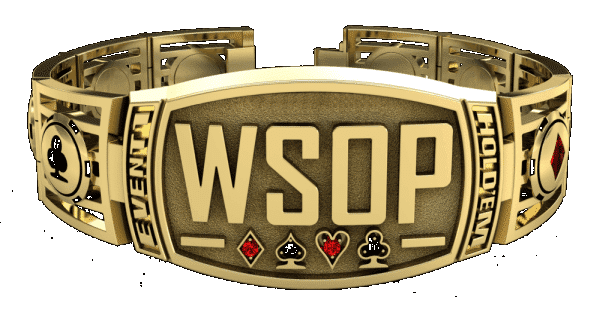
Bobby Baldwin Sneaks into the Money
“It takes a lot of heart to play No Limit poker.” ~ Bobby Baldwin, 1978 WSOP Main Event champion.
Just five events remained before the Main Event. A.J. Myers, Mickey Perry, Dody Roach and Glen Rodgers all won gold before the first $10,000-entry event of the series, Event #12, No Limit 2-7 Draw Lowball. With 19 entries, only the best of the best were in the hunt and despite close runs for ‘Chip’ Reese (5th for $9,500) and Bobby Baldwin (2nd for $38,000), it was the 1980 Main Event champion Stu Ungar who took the top prize of $95,000.
It was no surprise that ‘The Kid’ had won another bracelet. If any of the old professionals hoped that Ungar – known by now as an inveterate gambler as much as a gifted card player – would give the Main Event a miss, they were to be disappointed. This was prime Ungar, the one with the hunger, and the Kid was about to make poker history. As a media circus descended on Las Vegas, ESPN’s Curt Gowdy presented the all-new coverage of the Main Event. As he described, from California to Alaska, players from all over America and ever further were in place for the biggest tournament in town.
David ‘Chip’ Reese was named the MVP, or Most Valuable Player for cashing five times across 13 events, including four top five finishes. New Yorker Bobby Baldwin, the returning champion from 1978, was among the field when the Main Event kicked off.
“It takes a lot of heart to play No Limit poker; a lot of players play Limit games,” said Baldwin, known as ‘The Owl’ for his vast knowledge of the game. “In No Limit, you can win 15 pots in a row, make a mistake on the 16th and be in the bleachers for the rest of the tournament.”
In 1980, there was a slight change to the money payouts, and Baldwin himself would eventually benefit from it. More players were paid than ever before as the previous maximum of five payouts was increased dramatically to the final nine players. Anyone busting from 9th to 7th place would earn $15,000, a return of $5,000 on their buy-in and after Andy Moore and Sam Petrillo respectively had busted, Baldwin himself slid out in seventh place with this result. He was unlucky to do so, moving all-in with pocket nines against Perry Green with pocket queens after a flop of 9-4-3 had landed. Green got lucky to hit a queen on the river and was overcome with emotion when it landed, whooping in relief along with his wife on the rail. Baldwin was out a few minutes later.
Hole Cards and Heroes
In an innovative play from the WSOP, hole cards were made known to viewers in some hands, with a corny graphic appearing on screen to tell players what the players had in certain hands. Coming ahead of the infamous ‘lipstick’ cameras of the 1990s UK TV show Late Night Poker, it was still a powerful tool to bring viewers deeper into the action, and it improved the narrative for the final table immensely.
‘To know that you’re the best player in poker, you really have to beat the other players,” said Benny Binion as he sat on the sidelines waiting for his moment to dump half a million dollars on the table when play moved to heads-up. There was a long way to go before that happened, of course, and Ungar needed to double up through Green to get back into contention as he bid to defend his title. At a thrilling final table, the first one ever to see all the players who made it finish inside the money places, Jay Heimowitz busted in sixth place for $30,000 when Ungar flopped a set of jacks to bust him and started to assume some control over the table.
Heimowitz, who played poker in the army, is one of only three players, along with Phil Hellmuth and Billy Baxter, to have won a WSOP bracelet across four different decades.
“You can get breaks, but I don’t attribute anything to luck,” said Heimowitz after the event. You take a fella like Doyle Brunson, excluding this year, he came in first in 1976 and 1977, and in 1980 came in second. How could you possibly attribute that to luck?”
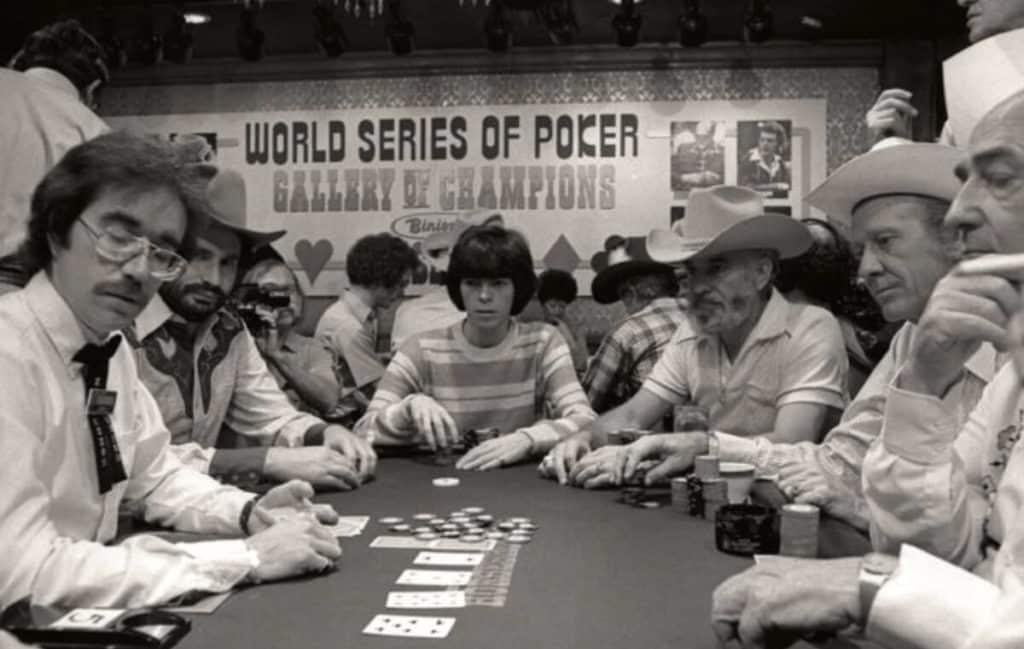
The Kid Goes Back-to-Back
Two Smiths went out back-to-back in fifth and fourth, as Bill Smith misread his hand and Ken Smith failed to fulfill the prophecy of his TV interview that came before the final four sat down.
“I’m going to win it!” he confidently declared. “I’m gonna win one hand then go!”
That didn’t transpire to be the case as Smith, wearing his trademark top hat, was left with his tails between his legs, Gene Smith winning with pocket nines when he made a full house to fatally damage Smith’s stack.
Perry Green was more modest, assessing that he had a one-in-four chance. Stu Ungar was asked his opinion only briefly at the end of the interview, but his response foreshadowed a great many future interviews once poker became a more respected profession.
“I feel like I have a good chance to win it.” Ungar said. “These are all tough players but I feel like [I’m] favorite to win it.”
After Smith’s departure to Gene Fisher, it was Fisher himself who left next, his trip kings all-in with the best hand, only to be beaten by Green’s rivered flush. With 400,000 chips, Green was ahead going into the heads-up, against Ungar sitting on 350,000. Trip jacks held against Green’s flush draw when the eventual runner-up tried it next and that put Ungar into a crucial lead, the made hand holding up this time.
With a 4:1 chip lead, a flop of 8-7-4 with two hearts landed. Perry Green shoved with an offsuit ten-nine and knowing that his opponent liked to bet draws, Ungar called with the ace-queen of hearts, blocking the flush. Calling to eight cards, Green didn’t get it on the four of clubs turn and when the queen of diamonds landed on the river, Ungar was champion again, his World Championship defended at the age of just 27.
“It’s very tough to win it,” said Ungar. “I tried to [play] until I got on a good streak and then hang onto it.”
“I think he’s a great player,” said Green in defeat. “I had him all-in twice and he had legitimate draws. The best place to do it is Binion’s Horseshoe, because when you win, they love it.”
As the crowd roared behind them, Stu Ungar beamed in glee. The young man had done what so many would attempt to replicate over the years, dominating the WSOP Main Event in back-to-back years. If ‘The Kid’ seemed destined to rule Las Vegas over the next decade. Sadly, things turned out very differently, and in many ways, Las Vegas ruled The Kid.
It would be nine years before Ungar again made the final table and sixteen years before he actually saw a final table again.
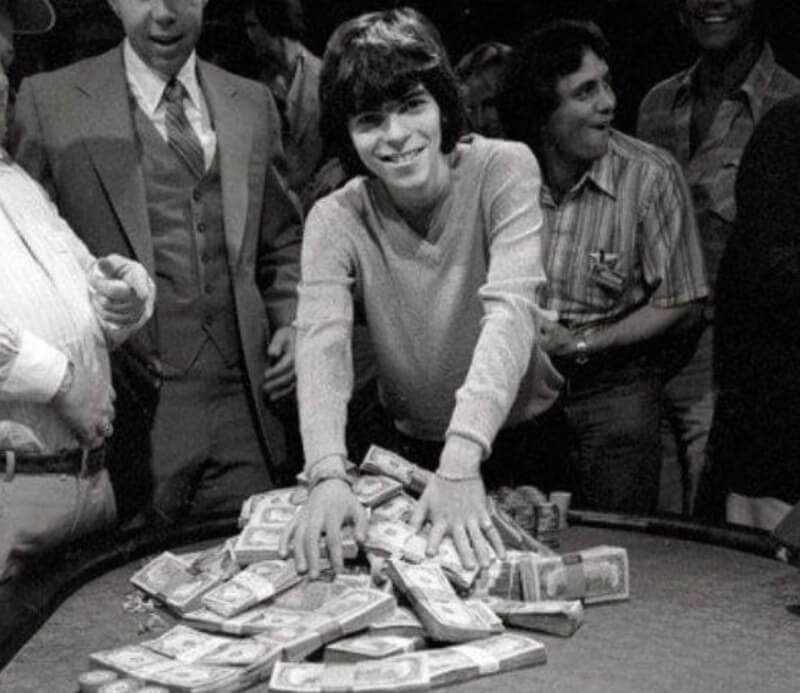
| Place | Player | Country | Prize |
|---|---|---|---|
| 1st | Stu Ungar | United States | $375,000 |
| 2nd | Perry Green | United States | $150,000 |
| 3rd | Gene Fisher | United States | $75,000 |
| 4th | Kenny Smith | United States | $37,500 |
| 5th | Bill Smith | United States | $37,500 |
| 6th | Jay Heimowitz | United States | $30,000 |
| 7th | Bobby Baldwin | United States | $15,000 |
| 8th | Andy Moore | United States | $15,000 |
| 9th | Sam Petrillo | United States | $15,000 |
1980 WSOP Main Event 1982 WSOP Main Event
About the Author: Paul Seaton has written about poker for over 10 years, interviewing some of the best players ever to play the game such as Daniel Negreanu, Johnny Chan and Phil Hellmuth. Over the years, Paul has reported live from tournaments such as the World Series of Poker in Las Vegas and the European Poker Tour. He has also written for other poker brands where he was Head of Media, as well as BLUFF magazine, where he was Editor.
